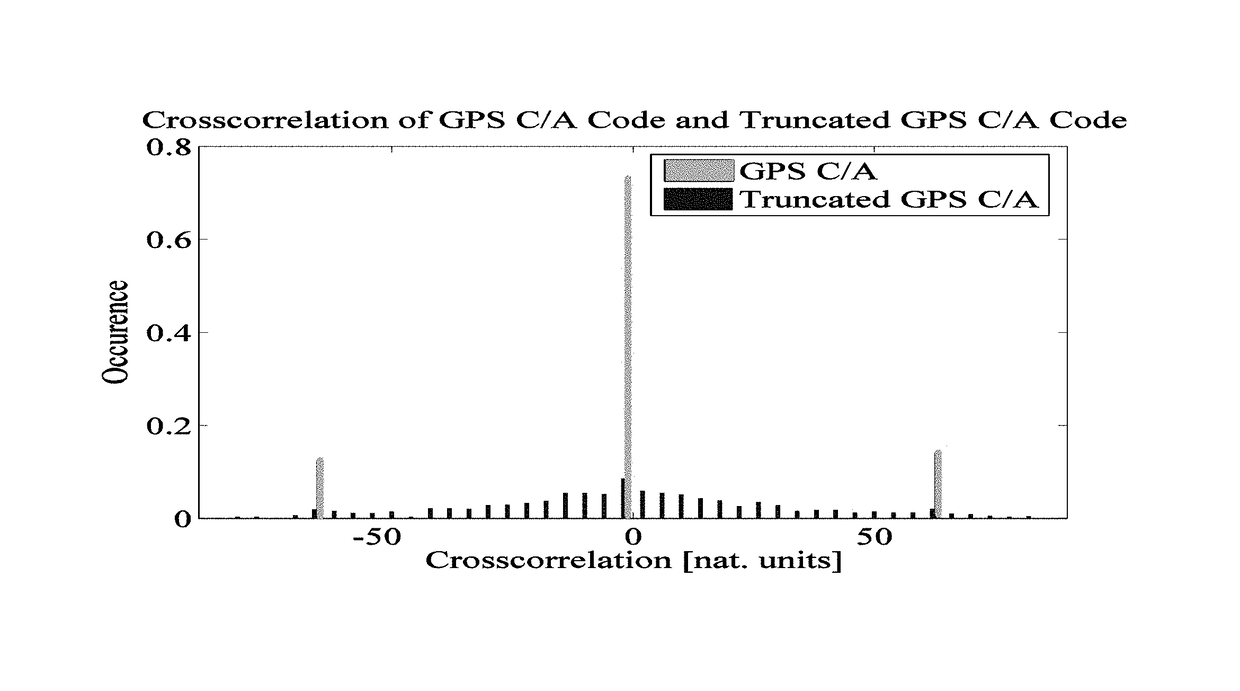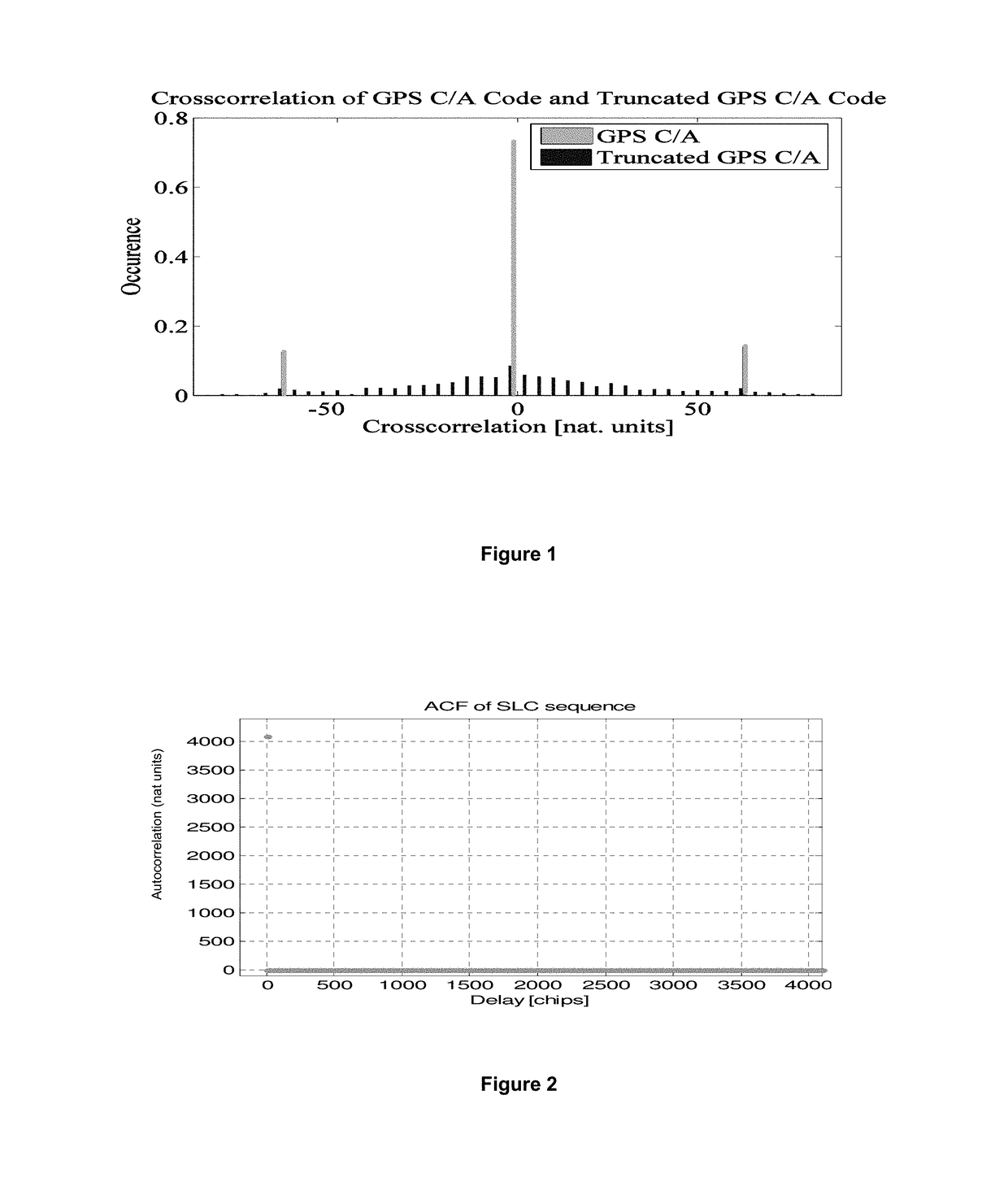Navigation system using spreading codes based on pseudo-random noise sequences
a technology of pseudo-random noise and navigation system, applied in the field of navigation system, can solve the problems of difficult to receive the spread code in a deep indoor environment, inapplicability of spreading codes of infinite length, ambiguity in position determination, etc., and achieve good correlation properties
- Summary
- Abstract
- Description
- Claims
- Application Information
AI Technical Summary
Benefits of technology
Problems solved by technology
Method used
Image
Examples
Embodiment Construction
[0059]A new code family as described herein can be constructed for any code length N that follows:
N=p−1 (5)
where p refers to any prime number. Any sequence contained in the new code family therefore has an even length, in contrast to most publicly known code families in the first class, as constructed from a closed algebraic formula, which usually have an odd length (or are derived from odd length sequences), as is the case for Gold codes, Kasami codes, Weil-codes, and so on. The new code family is derived from one single sequence, in contrast to e.g. Gold codes and Kasami codes, in which two appropriate sequences are usually selected as the basis for deriving the full code family.
[0060]The generation of the required single sequence has been published by Sidelnikov and Lempel / Cohn / Eastman independently, and are therefore referred to herein as SLCE sequences (see V M Sidelnikov, Some k-valued pseudo-random sequences and nearly equidistant codes, Probl. Inf. Trans., 1969, (5), 1, pp ...
PUM
 Login to View More
Login to View More Abstract
Description
Claims
Application Information
 Login to View More
Login to View More - R&D
- Intellectual Property
- Life Sciences
- Materials
- Tech Scout
- Unparalleled Data Quality
- Higher Quality Content
- 60% Fewer Hallucinations
Browse by: Latest US Patents, China's latest patents, Technical Efficacy Thesaurus, Application Domain, Technology Topic, Popular Technical Reports.
© 2025 PatSnap. All rights reserved.Legal|Privacy policy|Modern Slavery Act Transparency Statement|Sitemap|About US| Contact US: help@patsnap.com



